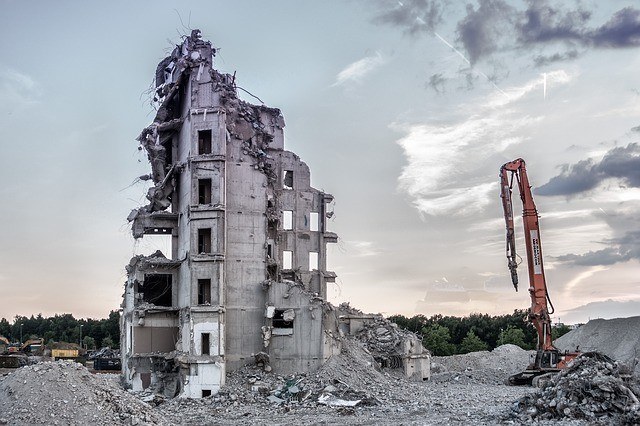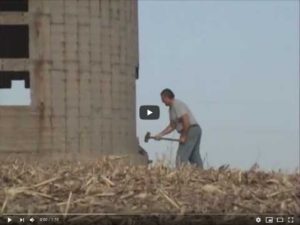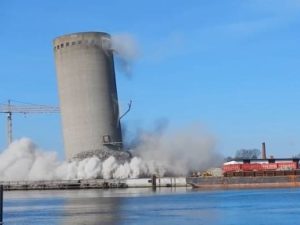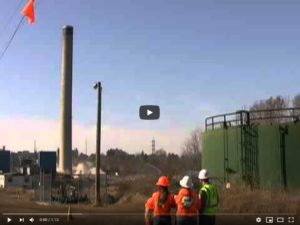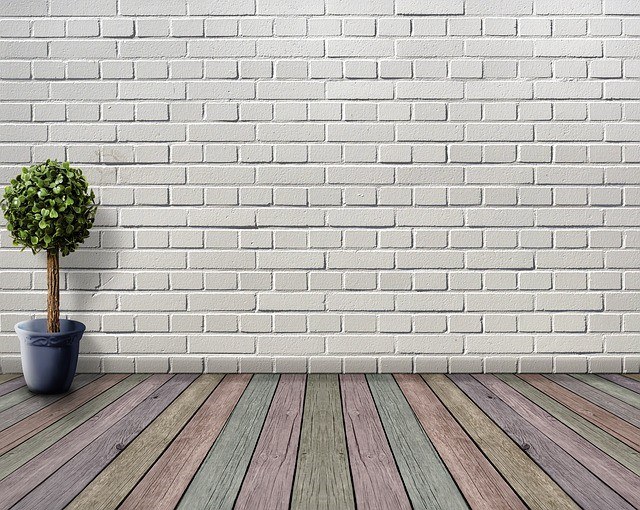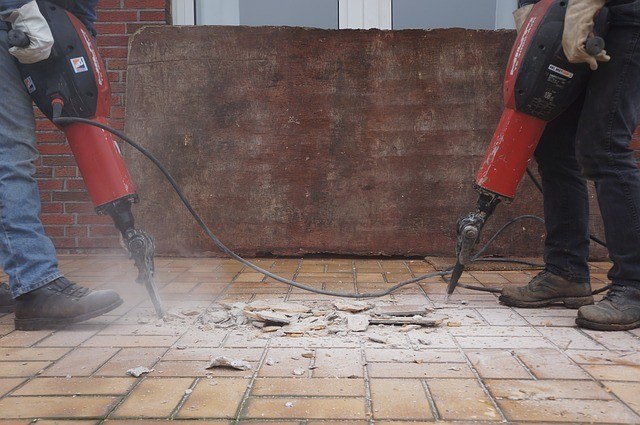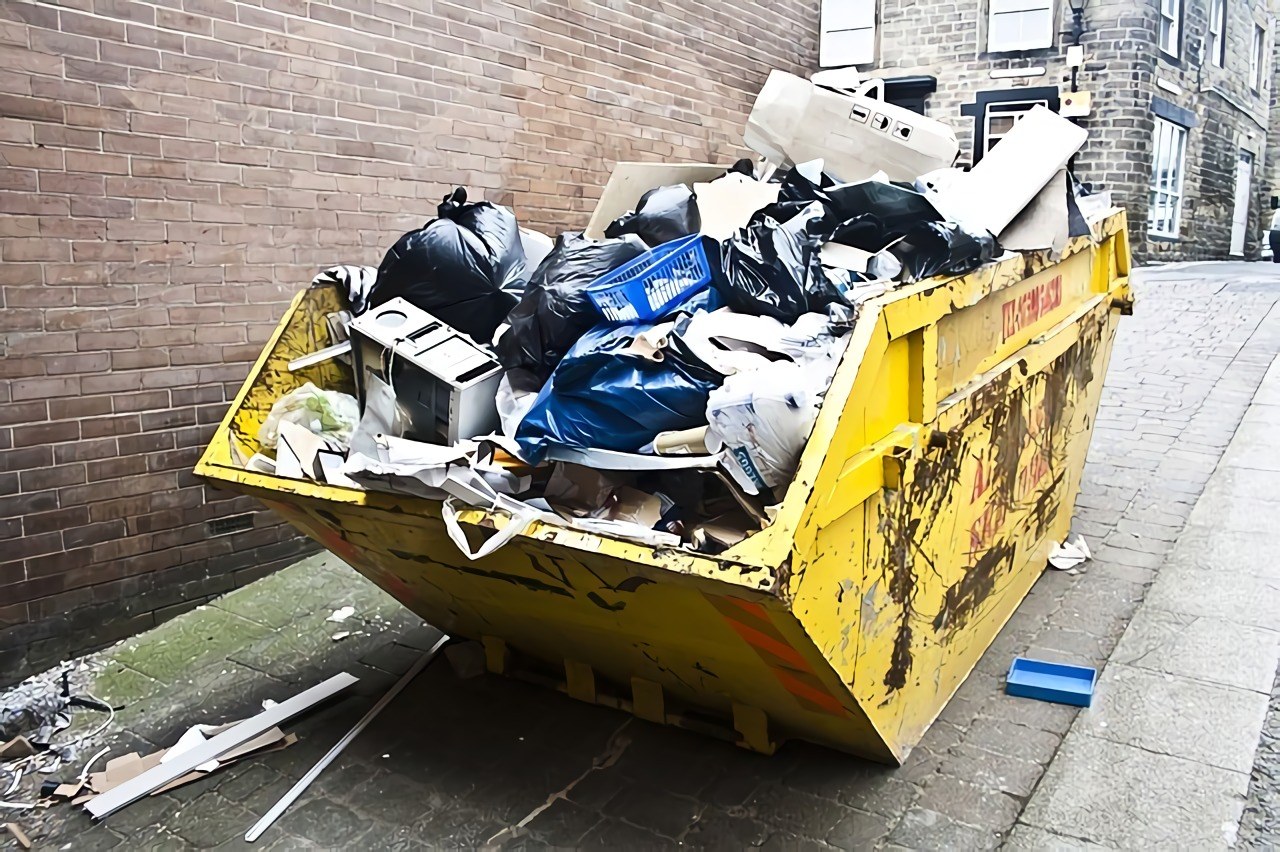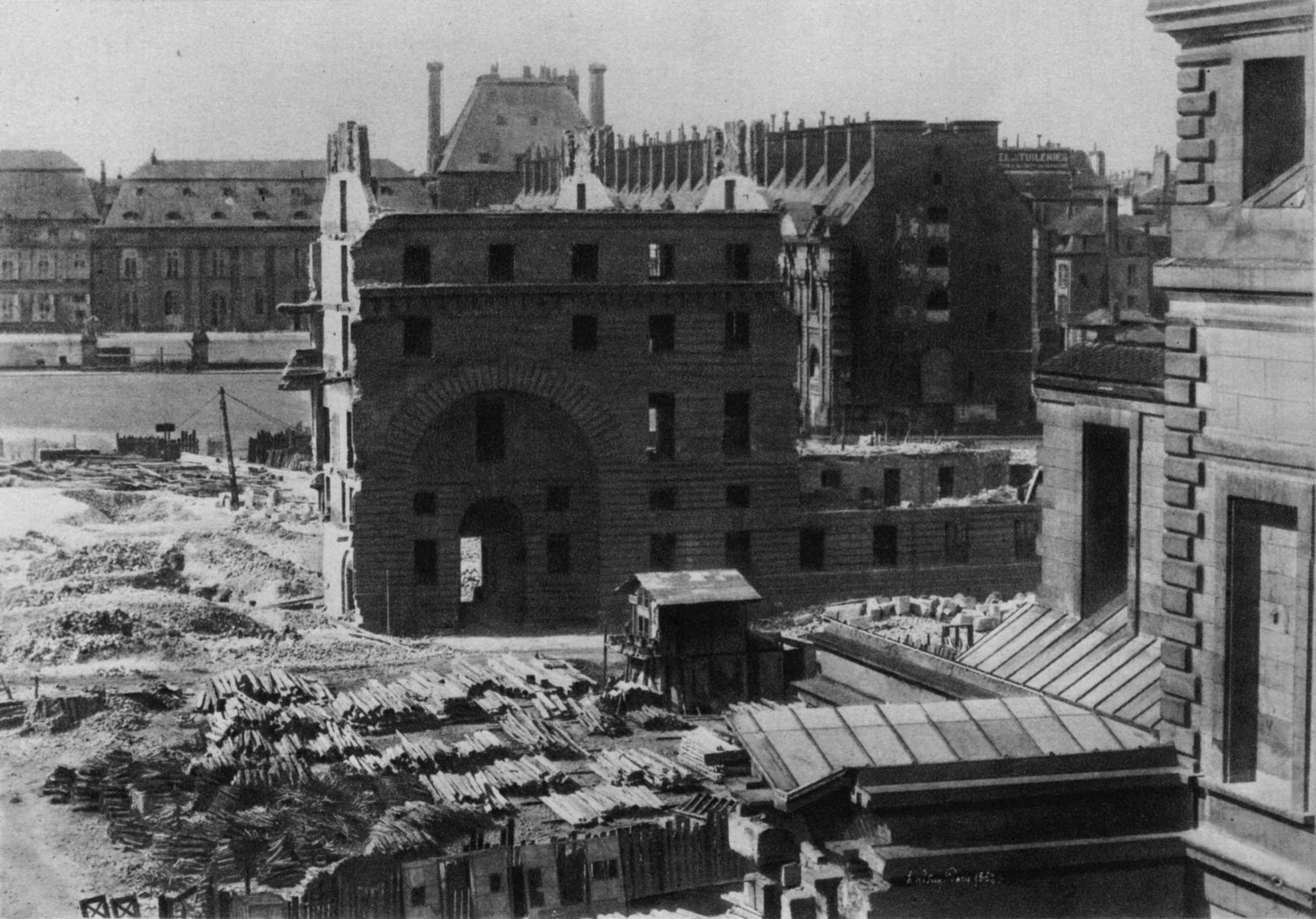When Demolition Goes Wrong
August 9, 2019 | by DanNo matter how many safety measures and watertight procedures are in place, we can’t deny that demolition jobs can be risky and dangerous.
When you’re dealing with tonnes of debris and building materials, even the smallest mistake can cause an incredible amount of damage – not to mention risk the health and well-being of everyone around.
We’ve put together a few examples below to remind us that demolitions can go very wrong, very fast – especially if you don’t take all the necessary precautions. That’s why it’s always worthwhile getting your demolitions done through a reputable demolition company like ours here at 3D Demo.
A DIY Close Call
DIY demolitions are never a good idea, especially if you don’t have proper experience and expertise in demolitions.
Yes, you’ll probably save money by avoiding professional fees. But you’ll also be risking thousands of dollars of damage to surrounding property. Or worse, risk your life and the lives of those around your building.
This DIY demolition of a silo may be a funny incident now, but it’s also a clear reminder that DIY demolitions are extremely dangerous. Even more so if you don’t use the right demolition techniques for the job!
The man in the video was very lucky to not get hurt, and it’s easy to see just how bad this could have gone.
Falling the Wrong Way
Sometimes, even months of careful planning and evaluation can lead to unexpected – and costly – demolitions.
Here’s a common example of disastrous demolition – a large structure falling over in the wrong direction. The demolition of this silo in Denmark was going according to plan even after the detonation of the explosives. Until it went the other way.
As the bottom of the silo gave way, the rest of the silo slowly toppled in the opposite direction of where it was designed to fall, crashing toward the library and cultural centre in the lot beside it. Thankfully, no one was reported hurt, and most of the library and cultural centre were fine (aside from being filled with dust and debris and a part of the building being damaged).
Ooops…Wrong House
You may have read about this story when it made the rounds in the news a couple of years ago. But it’s worth looking at again if you want a reminder of just how devastating a small mistake can be in demolition.
A demolition company was hired to demolish an old house in Bankstown in Sydney, and the house was brought down without much trouble.
But they realised they made one mistake: They demolished the wrong house.
It turns out the crew were supposed to demolish the property beside the house they just tore down. The mix-up was caused by the torn-down building having the wrong house number on its mailbox. The workers saw the number on the mailbox and assumed that this was property they were supposed to demolish – and off they went.
What this example shows is that even a small mistake – even something as little as a wrong assumption – can lead to disastrous results in demolition.
Undetected Crack
When you’re demolishing something as big an industrial smokestack, everything needs to go perfectly. Otherwise, it can be disastrous – as this incident shows.
An old power plant smokestack was being demolished and rigged with explosives by professionals to bring it down. Like so many demolitions gone wrong, everything was going according to plan until it started falling the wrong way. After the explosives detonated, the smokestack leaned the wrong direction and fell on top of power lines and back-up generators nearby. This caused a reported loss of power in parts of the town for more than two hours. Fortunately, no one was reported hurt in the incident.
Experts think the disaster was caused by an undetected crack on one part of the tower that caused it to topple in the wrong direction.
This goes to show that everything in a demolition needs to be evaluated and checked over multiple times with extra safety and precautionary measures in place.
Work with Professionals Who Go the Extra Mile
If you have a demolition project up ahead, save yourself the trouble and go with professionals who have the experience and expertise to get the job done safely.
In Brisbane, 3D Demolition are recognised as demolition professionals you can trust. We work according to Australian Standard AS2601-201 (The Demolition of Structures), and we always comply with council guidelines and Workplace Health and Safety regulations. Safety will always be our top priority, both for our team and for the people and structures around your building.
If you want to find out more about how we can demolish your building safely and properly, contact us today to talk to one of our specialists.
Brick vs Timber House – What’s Easier to Demolish?
August 2, 2019 | by DanWhen it’s time to tear a house down for demolition, many think the process is the same for both brick and timber structures, but that’s simply not the case. Demolishing a brick house versus a timber house is very different – both in the time it takes to do it and overall cost.
So which of the two is easier to demolish – brick or timber?
Generally, timber houses are easier to demolish than brick houses.
Here’s why.
- Lighter debris – Timber is typically lighter than brick, which makes it easier to take down and remove off-site. There are even some timber materials that can be demolished manually with small tools. Brick, on the other hand, is heavier and much more solid, which means it often requires heavy tools and machinery to demolish.
- Quick disassembly – Many parts of timber houses can be disassembled in parts and sections, making the demolition time shorter. Brick structures, meanwhile, often break apart in pieces, so they usually take longer to take down completely.
- Easier to salvage – Because they can be taken down largely intact or in large pieces, timber materials are easier to salvage and recycle. Brick can also be recycled, but they often require more time to collect and process than timber materials.
Which is Cheaper to Do?
Demolishing a timber house is generally cheaper than demolishing a brick house.
That’s because brick houses often require more time, tools, and labour to demolish. Because brick is more labour-intensive, it often requires more resources to take down. This increases the total cost of demolition.
Most timber house, on the other hand, can be demolished quickly and have plenty of salvageable materials to resell or recycle, which can help offset the costs of demolition.
But if you have a brick house you want to be taken down, don’t worry. You can maximise your savings in brick house demolitions if you work with experts who have the experience and expertise to tear it down efficiently with minimal waste.
At 3D Demo, we can demolish both timber and brick houses efficiently, helping you save time and money on your project.
Is Timber Always Easier and Cheaper to Demolish?
Not always. Although timber houses are generally easier and cheaper to take down, this is not true in every case.
Every property is different, and the total cost and difficulty of its demolition will depend on several factors. Demolishing a timber house with asbestos, for example, could end up costing more than demolishing a small brick house because of the added costs of asbestos removal and disposal.
Other factors to consider include the size of your house, its location, the slope of the land on your property, and other structures you want to take down (e.g. trees).
To get an accurate estimate of how much demolitions will cost, we always recommend consulting with experienced demolition experts to get a better idea.
If you need advice for demolishing your brick or timber house, have a chat with us to find out more. We can demolish any type of house quickly and safely, whether it’s made of brick, timber, concrete or any other material.
How to Tell if You’ve Found a Quality Demolition Company
July 26, 2019 | by DanWhen you need to demolish a building, it’s tempting to go with whichever company can give you the lowest demolition fees. But if you focus solely on price instead of the quality of service you’re getting, you could end up paying more money in the end.
Demolitions are big, complicated jobs, no matter how small or simple your building may look. If you don’t hire the right people, you’ll encounter problems and issues that will make you wish you spent more on quality service from the start.
The good news is it’s easy to tell whether a demolition company is worth your time and money – you just need to know what to look for.
Before hiring a demolition company, make sure they have these qualities:
1. Experience
Experience is priceless in demolition projects. Experienced professionals know that no two demolitions are exactly the same, and they will create a demolition plan to suit your building and circumstances.
Their decisions will be guided by years of industry experience, which will help them identify risks and issues in your demolition project so they can be addressed before they cause bigger problems.
2. Insurance
Insurance may not always be a priority in demolition projects, but it’s something that you definitely want on your side. If you work with a demolition company without insurance, you’re effectively rolling the dice and risking more than you bargained for.
Remember that things can go wrong very easily in demolitions – and when they go wrong, they can go REALLY wrong. Avoid the risks and headaches of uninsured demolitions by making sure you work with demolition experts who are fully insured.
3. License and Certifications
Almost anyone can demolish a building with the right tools and machinery, but not everyone can demolish buildings safely and according to industry standards. The best way to make sure your demolition complies with safety regulations and industry practices is to work with a demolition company who has the appropriate license and certifications.
This ensures they meet industry regulations and can provide the professional services you’re paying for. For best results, work with a company that has the qualifications to demolish different styles and sizes of buildings.
4. Good Communication
The last place you want to be in your demolition project is in the dark. Demolitions can be incredibly complex, and they require plenty of careful planning, preparation, and execution. If you’re not aware of what’s happening in your property, then you could encounter issues and problems that you could have helped to avoid.
A quality demolition company will keep you involved in the process from the start, communicating clearly from day one and keeping you in the loop until the end.
5. High Safety Standards
There’s no way around it: demolitions are risky and dangerous. That’s why you should always work with a company that prioritises safety above everything. A quality demolition company will take all necessary precautions and safety measures to protect not just their team, but also your property and the people around it.
Proper safety measures also involve appropriate waste management and disposal, so make sure your company also has guidelines and services for these.
Want to Work with Trusted Demolition Experts?
If you’re looking for demolition experts in Brisbane you can always trust, we’re here to help you with your project. Since 2010, we’ve built a reputation as one of Brisbane’s most accomplished and trusted demolition companies, demolishing a variety of buildings and properties for our clients.
We’re known for our high safety standards, and we have public liability insurance and demolition licensing to tear down your building without issues.
Call 0401 314 356 today to talk to one of our managing directors directly or contact us for any questions or enquiries.
How to Reduce Waste in Your Demolition
May 27, 2019 | by DanHouse Demolition involve clearing a lot of waste and rubbish, so most people think there’s no environmental-friendly way to do it.
But even though you can’t eliminate waste completely during demolitions, there are ways to reduce your waste and make it greener.
Here are some of the best ways to do it:
1. Know what materials can be salvaged.
Before starting, it helps to know what type of materials you can salvage to sell, recycle and reuse.
Some of the most salvageable materials include:
- Timber beams
- Bricks
- Concrete
- Roof tiles
- Steel and metal components
- Sand
- Gravel
- Granite
- Plants and greenery
By knowing what type of materials you can and cannot save, you’ll have a better idea of what parts of your building you need to keep an eye on for your demolition.
2. Make a full inspection and evaluation.
Before proceeding with your demolition, make sure that you complete a thorough inspection and evaluation of your site. This will let your team know which parts and materials need to be salvaged.
Use this inspection to create a plan for removing any salvageable materials and what to do with them after.
Although not everything in your building can be saved, you can maximise the amount of salvaged materials by planning your demolition around them.
3. Demolish by sections.
Instead of demolishing everything at one time, consider demolishing your building by sections. This will help you prevent destroying parts and materials that you may otherwise be able to salvage.
Experts also recommend demolishing sections in a way opposite to its order of construction, working your way from exterior furnishings down to its foundation.
It also helps to keep salvageable components with their main parts (e.g. not removing the latches and frames in window or doors) to make it easier to save parts later.
4. Do soft strips manually.
Completing soft strips manually will make it easier to keep salvageable materials whole and undamaged. It will also produce less waste in the end, helping you minimise resources for clean-ups and materials transport.
Manual soft strips may take more time and effort, but it often results in more salvageable materials and less waste accumulated overall.
5. Separate materials on-site.
Separating materials on-site will help you minimise costs and resources dedicated to handling and transporting materials later.
The best practice is to sort and store similar materials together. Metal parts, for example, should be separated from parts made of concrete or timber.
The more organised you are in sorting your waste and materials, the less resources you’ll need to sort through everything in the end.
6. Store materials properly.
Proper storage and handling are key to keeping salvageable materials in useable condition. If you don’t store them properly, then they could get damaged or deteriorate to the point of being unusable.
Timber products and materials, for example, must be kept dry to avoid the build-up of mould or rotting. Metal parts must also remain dry to prevent rust and corrosion.
7. Work with demolition experts who care about the environment.
If you’re not sure how to salvage materials properly – or if you simply don’t want to do all the work yourself – then work with demolition experts who are committed to reducing waste as much as possible.
At 3D Demo, we complete all our demolitions according to relevant environmental regulations, and we see to it that we salvage, recycle, and reuse materials as much as we can. We also use a variety of dust control measures to minimise dust, erosion, and sediment-run-off during our demolitions. This is all part of our duty of care to the environment.
When you work with professionals who value waste reduction as much as you do, you’re more likely to make less of an impact on the environment.
Is it worth reducing your demolition waste?
Absolutely!
Reducing waste and making your demolition as efficient as possible will help minimise the environmental impact of your demolition. And although you can’t eliminate its impact completely, you can at least minimise its negative effects and reduce the amount of waste you send to the landfill.
Best of all, reducing your waste can make your demolitions more efficient and organised, saving you more money and resources in the end.
If you need more information about eco-friendly demolitions and how it can help you, have a chat with our team to find out more.
How Demolition Has Changed Throughout History
May 27, 2019 | by DanIt takes a lot of effort, skill and energy to demolish a property, but we take it for granted because buildings are demolished so frequently around the world every day. (get in touch with us if you need demolition Brisbane wide) One minute a building is there, the next minute it’s not, and a new structure is built in its place in no time.
It’s a normal part of our society’s continual evolution, but the act of demolishing a building has not always been so frivolous and mundane. Much has changed over the years in how and why demolitions take place. Once you learn the history behind demolition and discover how far we’ve come, we’re sure you’ll have even more appreciation for the skill and art behind this practice.
A Destructive and Sinister Past
Unfortunately, due to the destructive nature of demolition, this practice didn’t start for practical and wholesome purposes. House demolition actually originated as a military tactic and was primarily used in a number of conflicts to deliberately target and inflict destruction upon houses during a military advance. Civilian dwellings often became the target of destruction during war too, as forces tended to use them for shelter and as firing positions.
The earliest recorded act of house demolition took place back in 1069-1070 when William the Conqueror (the first Norman King of England) and the Norman Troops demolished property in the rebellious north of England to deprive an enemy of civilian support. The destruction and demolition of homes and buildings have unfortunately been a common sight in many wars since.
A number of cultures and countries also used demolition as a form of punishment for a variety of legal offences. While this is primarily for the removal of illegally constructed homes and buildings, during the medieval age in Flanders and Northern France, the destruction of homes also occurred as punishment for a variety of other offences such as harbouring an outlaw.
House Demolition As a Service
Despite the ominous past surrounding demolitions, the house demolition service has quickly become an essential part of today’s modern society. The need for and frequency of demolitions really ramped up in the 1960s and 1970s due to the high number of massive housing projects occurring at the time, and the service has only expanded and flourished since then. However, as with everything, house demolition as a service had to be perfected over time until it became the well refined and safe practice it is today.
Types of House Demolitions
There are two primary forms of house demolitions around today – building implosions, where explosions are used in a controlled demolition to take down a building almost instantly and deconstruction, where buildings are pulled apart and destroyed by machines. A crane with a wrecking ball is another common method known in popular culture, but it is rarely used today because the uncontrollable nature of the swinging ball is now deemed to be unsafe.
Building Implosion
The building implosion method has been around for a long time, with the earliest attempt occurring in Ireland back in 1773, but while it is still undertaken in many other countries, this type of demolition is no longer undertaken in Australia. The implosion form of demolition while entertaining to watch, has encountered a few problems and mishaps in the past – even resulting in some fatalities.
Deconstruction
Because of the failings of the implosion method, the deconstruction method of demolition has taken the lead in our country. Deconstruction is a relatively new approach to demolition. In this method, buildings are chomped down piece by piece with a hydraulic mulcher the effectively ‘eats the building’. Materials from the building are removed and then segregated for reuse or recycling. This method is effective, safe and environmentally sustainable.
The Future of Demolition
“The more inner-city projects there are – and there are more and more of them – the greater the demand for cleverer, cleaner means of demolition.” – John Woodward, president of the Institute of Demolition Engineers – The Independent.
With the continual advancement of technology and machinery, home demolition will only continue to get safer, and demolition techniques will continue to be perfected.
Here at 3D Demolition, we deliver deconstruction demolition services. We 100% stand behind this trusted method because this is the most sustainable, safe and effective way to demolish almost all types of structures.
Find out more about our demolition services or if you’re interested in booking our demolition services, give Daniel a call on 0401 314 356.
Call Daniel

